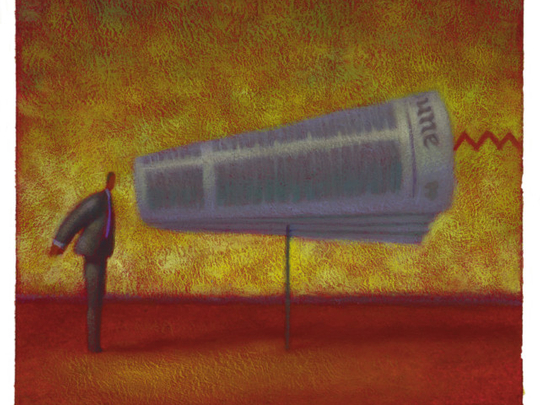
The conundrum of a large democracy is that while your vote decides your literal future, you can’t really vote for a person or a party — you can only vote for a brand! It’s one thing to vote for the sarpanch (village headman) you know personally and can vouch for, and another altogether to vote on the basis of what campaigners (for and against) want you to believe. The Indian general elections being the most looked-forward-to event of 2014, let’s have a look at the top brands on offer and what they stand for.
Actions speak louder
A brand’s actions need to substantiate its stated attributes for it to be experienced consistently and come across as authentic. Top of the heap are the incumbent Congress, the biggest challenger BJP, and the new kid on the block who caught the public’s imagination, the AAP. Congress of course has the longest brand history, and therefore both heightened attention and expectations, while the BJP as a ruling party has a chequered history, with its reputation having been founded on being a strong opposition party. The AAP comes with shiny promises of a fairy-tale land where everyone can have chocolate from the fountain all day complete with witches and wizards to burn at the stake.
Congress has always stood for secularism and has been credited with India’s economic liberalisation process that rolled out in the early 1990s. However, a deeper look at the party that pretty much almost always ruled India after independance reveals a closer allegiance to a more socialist version of capitalism than it tries to project currently. Besides, the socialist implied principle of “protecting the poor” is the little black dress of the political agenda and propaganda wardrobe. Interestingly though, the Congress has been cast as the elite brand, probably on the back of development-oriented policies in the early Nineties. BJP built brand recognition and loyalty over a fundamentalist religion-based stance as true protector of the Hindu faith, which they have time and again tried to unsuccessfully make a more religiously inclusive agenda. Oxymoron? The more recent platform is the promise of sharp capitalist policies that encourage economic development to put India back on the global stage and on the fast track to growth… and Hindutva apparently being pushed out more as an agenda in north and central India.
Corruption-free nation
The AAP promises squeaky-clean administration with equal opportunity and access to all socio-economic classes — clearly socialist leanings. And of course, the much touted “simplicity” of austere living as the aam aadmi (the common man). They stay away from the harder questions of what would fund all these opportunities and access without the essential growth in national GDP, on the back of socialist policies. But having won in Delhi, their brand attribute of simplicity is already under threat for first agreeing to a five-bedroom duplex (subsequently refused) or accepting government cars without the lal batti (flashing red VIP lights) over travelling by public transport — since the aam aadmi couldn’t have afforded that.
Faces behind brands
Let’s take a look at the faces that front these brands. Rahul Gandhi, projected as young, educated and forward-looking. Experienced more as inexperienced, bumbling and clueless (sardar jokes have been more popularly replaced by Rahul jokes!). Narendra Modi, the national organiser and developer, but behind all the smoke and mirrors who is he? Religious bigot or not? The courts have cleared him, he has Gujarat for a pilot project of what the country should look like, but really is that all plausible evidence that minority interests would be protected and not cause constant communal tension? Certainly the words in his apologetic blog are not enough to wipe out his alleged actions. Arvind Kejriwal, the educated, experienced professional turned national do-gooder — so absolutely appealing for a country famed for being run often by barely literate criminals, thereby lately attracting even more professionals to the party. But absolutely new to the game of running a country. Rabble rouser or messiah?
So as the elections draw close, India’s citizens have rather mixed cultural, social or psychological brand messages to decide their votes on. Of course, the introduction of none of the above (Nota) to the mix makes this race even more interesting. One can choose to buy one of the brands or leave the shop having rejected all of them. Beyond the brands projected through national, regional, broadcast media, social media, records and reports of some deeds and misdeeds — the final votes would be cast based on the emotional connect these brands have been able to make with its voters. So goes on the democratic process of choosing exactly what you want and who you want and how. But sometimes even if it’s that brand you always coveted and which looked absolutely stunning online with its absolutely-can’t-refuse price tag — it’s only when you buy it that you realise it’s really not what you thought it would be. And for this election, none of the parties’ prime ministerial candidates has ever really been tried for size in nation-building or management.
— Madhuri Sen is Managing Director, India, at Waggener Edstrom Communications, with more than two decades of multiplatform marketing and communications consulting experience across sectors.







